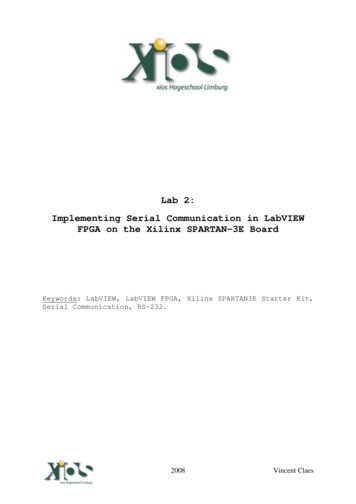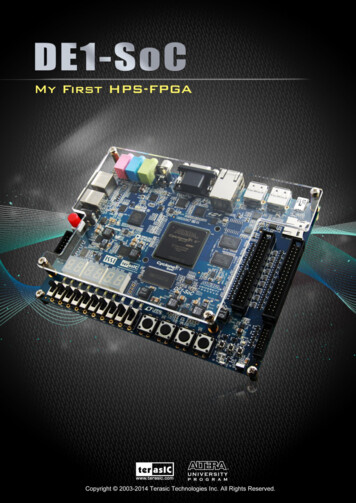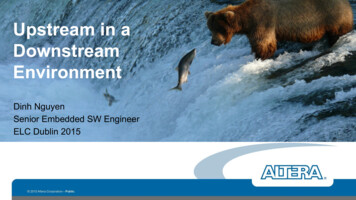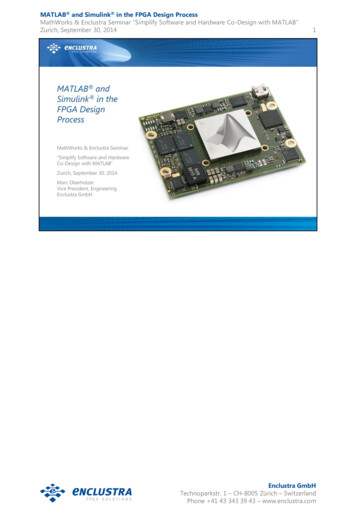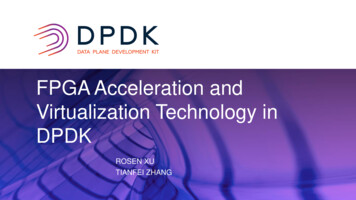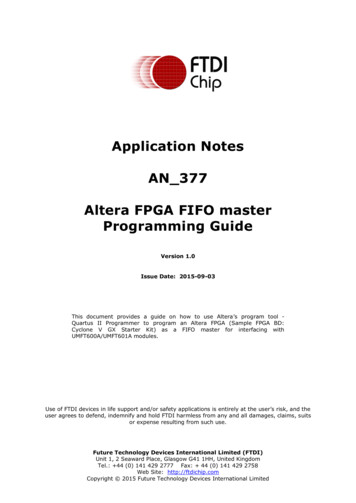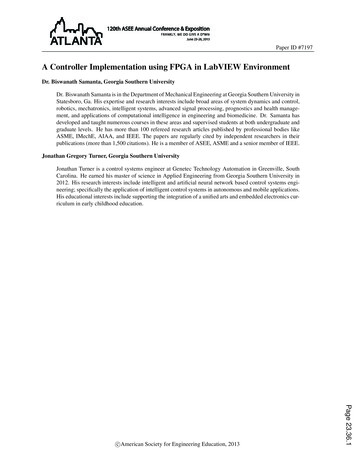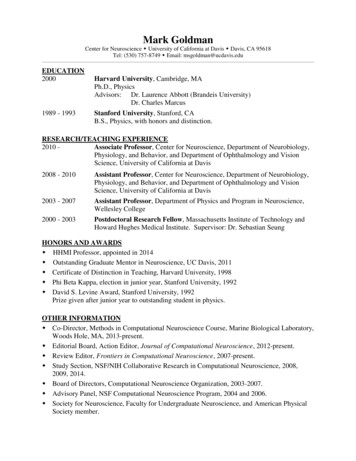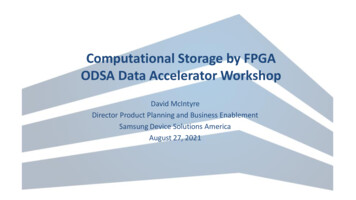
Transcription
Computational Storage by FPGAODSA Data Accelerator WorkshopDavid McIntyreDirector Product Planning and Business EnablementSamsung Device Solutions AmericaAugust 27, 2021
The Infinite Data Ocean
Our MissionOceans of data, but how to search effectively?Data Search and Analytics: No Compromise UrgentAccurateSustainableResults- drivenScenario Planning- Medical (Genomics)- Fintech (Colo Trading)- Cyberforensics (Security)- Edge (AI Surveillance)
Today’s Compute and Storage CompromiseLatency: Data transfer to cloud or on-prem hostservers for all processing tasksRestricted Bandwidth: Network congestion toover-provisioned serversExpense: Cloud instancesSecurity and Privacy Issues: Data exposurevulnerabilities and sharing across partiesResource dependencies: Misbalanced provisioningof compute and storage resources (see pic)StorageNetworkComputePerformance Limit:Storage to Host Server Ratio
Computational Storage ResolutionReduced Latency: Bringing compute to the datafor improved response times with data analyticsCapEx and OpEx savings: Less data centerserver resources required for reduced TCOSecurity and privacy compliance: Localized dataprocessing provides better protection andcontrolFlexibility and scalability: SmartSSD scale upbased on customer application requirementsStorageComputationalStoragePerformance Enabled:SmartSSD local compute
Computational Storage ExplainedImproved Performance with local on-drive compute resourcesMinimal data movement requiredSecure data attributes
Computational Storage DeploymentsMove Compute Closer to StorageComputational StorageArchitectureCurrent Compute/StorageArchitectureDeployment ExamplesCPU Compute/Storage ServerCSDCSD CSDCPU Smart Cache LayerCSDHDDImage Source: SNIA Moving data betweenstorage and host CPUcreates performancebottlenecks for dataintensive applications Data processed directly on theCSD no large datatransfers, faster time-to-insight Adding CSDs adds processingpower and internal bandwidth scalable acceleration 2021 SNIA Persistent Memory Computational Storage Summit. All Rights Reserved. CSD Cloud to Edge computeCSD
Computational Storage Product ExampleCPU (Host)SmartSSD CSDSoft PCIeSwitchSSDControllerNVMeSoft D4TBP2P communicationAcceleratorFPGA DRAMNANDFPGADRAMFPGAAccel.FPGADRAMPCIe Address SpaceSamsung SmartSSD CSDFPGA Accelerator, Flash Controller, 4GB DRAM and 4TB TLC NAND flash Peer-to-peer (P2P) communication enables unlimited concurrencySSD-to-Accelerator data transfers use internal data path Save precious L2:DRAM Bandwidth (Compute Nodes) / Scale without costly x86 frontend (Storage Nodes) Avoid the unnecessary funneling and data movement of standalone accelerators FPGA DRAM is exposed to Host PCIe address space NVMe commands can securely stream data from SSD to FPGA peer-to-peer 2021 SNIA Persistent Memory Computational Storage Summit. All Rights Reserved.
SmartSSD Drive Performance and Use cases Scalable Across Many Applications: Data at Rest and InlineDatabaseSparkSQL with Parquet Data5.3x overall performance improvement for heavyqueryPostgreSQL 1140x faster scan-heavy queries (7 - 331 queries/hr)Rich MediaH.264 Video TranscodingMulti-stream transcoding: 20% higher 1080pframe rateOffloading CPU workload : 87% lower CPU usageStorage& Big DataServicesLZ4 Decompression Scale-out3x decompression bandwidth, scales to 24SmartSSD drivesMPU search Scale-outSame regex search time for 10PB as 4TB9 / 13Confidential
Computational Storage and SecurityThe CSD may perform securityfunctions: Authentication. Host agent to CSD and CSDto host agent Authorization. Mechanisms for secure dataaccess and permissions control Encryption. Mechanisms to performcomputation on encrypted data that was notencrypted by the CSD. Mechanisms thatexchange information necessary for the CSDto encrypt/decrypt data. Auditing. Mechanisms that allow forgenerating and retrieving of a secure log 2021 SNIA Persistent Memory Computational Storage Summit. All Rights Reserved.Risks vs standard storage: The CSD can delete/add/modify data on the driveThe CSD functionality can be programmedVirtualizationRisks vs external accelerator: Direct access to storageFPGA programmingAccess to network infrastructure (NVMe-oF)Decryption of data prior to processing
Computational Storage and FPGA security FPGAs are SRAM based devices which are programmed by securebit streams–Key is programmed via JTAG port–Bitstream in encrypted with design tools–FPGA identifies encrypt/no encrypt for field testing AES 256 secures bitstream programs Additional Security Measures–Design Region Isolation–JIT Partial Reconfiguration–SOC and Bus Isolation–PUF files for device tamp/stamp.jsp?arnumber 6849432
Computational Storage ResultsSecurity- LeadershipSolutionRequirementsLow LatencyData Analytics SolutionsProduct LeadershipPerformance ValueData ProtectionInnovation and shared customer visionCloud to Edge Deployments
Computational Storage: Your InvitationCollaborate on workloads and use cases Data Analytics Data Management AI InferenceSolution development POC trials Ecosystem partners TCO comparisons to alternate technologiesReach out to learn more:David McIntyred.mcintyre@samsung.com
Host agent to CSD and CSD to host agent Authorization. Mechanisms for secure data access and permissions control Encryption. Mechanisms to perform computation on encrypted data that was not encrypted by the CSD. Mechanisms that exchange information necessary for the CSD to encrypt/decrypt data. Auditing. Mechanisms that allow for


